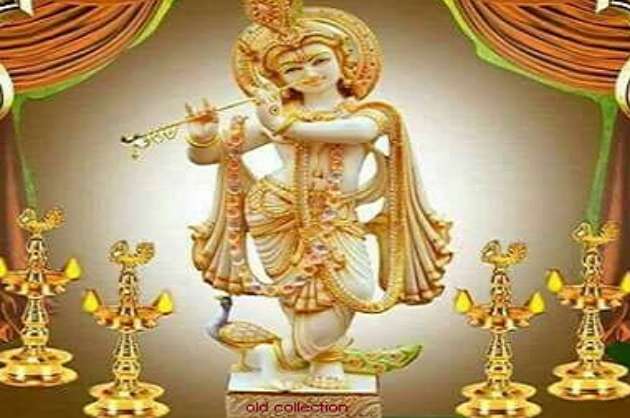Anupama Nair
www.mediaeyenews.com
India is known as the “spiritual guru” of the world. In India, “spiritualism is not an obsession of the human mind, rather it is a heritage as well as a continuous tradition”. India is famous for her culture, civilization, traditions, literature and epics, ancient medicine – Ayurveda, Yoga , ancient scientific theses like gravitation, atomic theory (later proved by modern science), ancient temples and holy cities, you imagine and we have it all. However, the greatness of Indian culture, especially “spiritualism” have contributed a lot —connecting the spirit of Indians throughout the ages. As a result, the spiritual-minded Indians have succeeded in maintaining their Indianness which could not have been possible otherwise. Indian life is dominated by personality which is well linked to spiritualism.
The Vedas offer spiritual direction to the Indians giving them the basics of spiritual and moral life. Our rishis should be applauded as the earliest spiritual masters on earth as their mantras resound with the seed of spiritualism, and India can be called the “cradle of spiritualism and civilization”. In India, spiritualism is not a mere obsession of the mind, but, it is a heritage and tradition. India is home to two great epics Ramayana written by Valmiki and Mahabharata written by Veda Vyas. The Shrimad Bhagavad Gita, often called as the Gita, is a 700-verse Hindu scripture that is part of Mahabharata, dated to the second half of the first millennium BC and exemplary for the emerging Hindu synthesis. It is considered to be one of the holy scriptures.
Gita is the divine discourse spoken by the Supreme Lord Krishna himself and is the most popular and well known of all the sacred scriptures from ancient India. It is revered as a true source of spiritual knowledge; it reveals the purpose and goal of human life. It is especially relevant in the modern world traumatized by a “mere virus”, you need to read it again and again to find salvation. It is curious though, it may seem that such an ancient text from a “foreign culture” has been so enthusiastically received by Westerners, the Gita, like all truly great works of literature, can be read on many levels — metaphysical, moral, spiritual, and practical, hence its appeal to the world. According to some, Bhagavad Gita is written by the Lord Ganesh when the great Saint was dictating to him.
For those who still haven’t had the pleasure of reading it, the Gita is a dialogue between Arjuna, one of five Pandava princes, and the Lord, who is “Parthasarthi” or the charioteer of Arjuna. Arjuna and his brothers have been exiled from their kingdom for 13 years and cut off from their rightful heritage by the Kauravas, their cousins. The Gita takes up the struggle to reclaim the throne, which requires the Pandavas wage war against their own kinsmen,
The story begins on the dusty plains of Kurukshetra, where Arjuna, a famed archer, is poised to fight. But he hesitates as he sees the army of friends, teachers, and kin, and believes that to fight—and likely kill—these men would be to commit a grievous sin and could bring nothing good even if he were to win the kingdom back. Krishna chides him for his cowardice—Arjuna is a Kshatriya after all, and warriors are meant to fight—but then goes on to present a spiritual journey that encourages him to fight his enemies, one that encompasses a discussion of the karma, jnana and bhakti yogas, as well as the nature of divinity, mankind’s ultimate destiny, and the purpose of mortal life.
Gita is a work of luminous and startling intensity, and Henry David Thoreau calls it a “stupendous and cosmogonal philosophy…in comparison with which our modern world and its literature seem puny and trivial.” Ralph Waldo Emerson spoke of the influence of Gita on him and wrote a book “Brahma”. Albert Einstein, however was moved by the Gita’s depiction of creation, and once remarked, “When I read the Bhagavad Gita and reflect about how God created this universe everything else seems so superfluous”.
The essence of Bhagavad Gita comes to each one of us when we start distinguishing it humbly, paying respect to it and have direct liaison with it. The Gita is also known as tri marga or three ways to attain liberation imparted by the Lord. Krishna represents pure attraction and attainment while, Arjuna stands for an average human. Hence, Gita is for every one of us for accomplishing salvation. The Gita is the root of all the Vedas, Puranas and other holy scriptures. The 18 chapters of Gita are separated into three main categories hence known as tri marga. The three main categories are “Karma Yoga, Bhakti Yoga and Jyana yoga”.
The essence of Bhagavad Gita is in each and every verse and each verse encompasses words and each word contains an alphabet. The chapters one and two describes the battlefield of Kurukshetra while the chapters three to six divulges Karma Yoga or the yoga of actions i.e., how to perform routine work and how it should be converted into swadharma. The Lord addresses the significance of karma that should be completely surrendered to the divine and deals with just doing our work without any expectations of the benefits attained from the work. The essence lies when each and every work is done for the Lord. Hence, our Karma becomes Karma yoga just by offering every action unto the Lord.
Further, the essence of Bhagavad Gita lies in the next six chapters i.e., chapter seven to twelve, which stands for Bhakti Yoga or the Yoga of Devotion, where it is stated that we should remember God every time. You do not become a Bhakta by meditating on the Lord for some time, but for twenty-four hours remembering him.
The last part again contains six chapters i.e., chapter thirteen to eighteen which stands for Jyana Yoga or the Yoga of Knowledge. “Self” is the true knowledge than one could be a Gyani. The gunas of material nature is unveiled as Sattva, Rajas and Tamo gunas having their own significance in everyone’s life. Lord even says that “Gyani is my true reflection”. It now becomes easy for us to choose any of the three means and ways to attain liberation. Now which one could be better is also so enunciated and elicited by Lord Krishna when he states “knowledge is better than practice without discernment, meditation on God is superior to knowledge, and renunciation of the fruit of actions is even superior to meditation: for, peace immediately follows renunciation”. So, attaining liberation by becoming a Karma yogi is the preferred one as clearly shown by the Lord. We need to remember “Krishna” in order to attain him, as he says “fix your mind on Me, and establish your intellect in Me alone, thereafter you will abide solely in Me. There is no doubt in it”. We can choose any of the tri margas and start reading it first and then implementing it practically into our life and then “we can taste the real essence of the Gita”.
There is a raging debate about reincarnation or rebirth. However, Gita makes it very clear when the lord states “ The atma or soul is indestructible, unbreakable and insoluble. The soul cannot be cut into pieces by any weapon, nor can it be burned by fire, nor moistened by water, nor withered by the wind. All souls are therefore eternally separated individuals”. The soul is seen as immortal and the only thing that becomes perishable is the body. Upon death, the soul moves into a new body to live again and again. Krishna says that for the soul there is neither birth nor death. Nothing actually dies, but we call the soul leaving the body as death, when there's no such thing as death. However, the Lord deals with what we call death and doesn't hide the fact that He is behind it.
Reading the Gita has changed my thought of life and how to live. It is the Lord, who inspired me to write this article, so that those of you, who has not read it still, will get some knowledge.





























Good article
Great article Anu. You were always a spiritual person.
A great one from a true Padmanabha dasi.
Wonderful article done by a Krishna Bhakta. Jai Shree Krishna
Started to read Gita
Jay Shree Krishna
Jai shree krishna
Jai shree krishna.
Jai shree krishna.
Jai Shree Krishna.
Jai Shree Krishna.
Jai Shree Krishna.
Jai Shree Krishna.
A perfect read during times of crisis
Great knowledge in corona time
Jai shree krishna.
Bhagavad Gita my favorite. Jai Shree Krishna.
Jai Sree Krishna.
Jai shree krishna
Jai shree krishna
Jai shree krishna
Read English version after I visited ISKON temple here.
Bhagavad Gita is great. Read Tilak’s version too
Bhagavad Gita is great. Read Tilak’s version too
Jai shree krishna.
Jai Shree Krishna. There is a Krishna temple here in New Zealand.
Jai shree krishna.
Jai shree krishna.
Jai shree krishna.
Jai shree Krishna.
Jai Shree Krishna
Jai Shree Krishna.
Jai Shree Krishna.
Jai Shree Krishna.
Jai shree krishna
Jai shree krishna
Jai shree krishna.
Jai shree krishna.
Good article
Good article
Reading the Gita will give strenghth when we are down.
Reading the Gita will give strenghth when we are down.
Reading the Gita will give strenghth when we are down.
Great article.
Great article.
Gita is a strength when life is stressful.
Gita is a strength when life is stressful.
Gita gives strength to everyone.
Gita gives strength to everyone.
Gita gives strength to everyone.